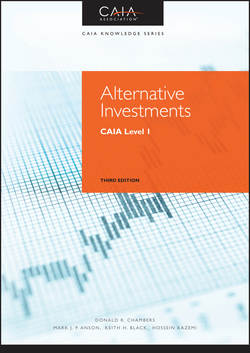Читать книгу Alternative Investments - Hossein Kazemi - Страница 14
На сайте Литреса книга снята с продажи.
PART One
Introduction to Alternative Investments
CHAPTER 1
What Is an Alternative Investment?
1.2 Alternative Investments by Inclusion
1.2.4 Structured Products
ОглавлениеStructured products are instruments created to exhibit particular return, risk, taxation, or other attributes. These instruments generate unique cash flows as a result of partitioning the cash flows from a traditional investment or linking the returns of the structured product to one or more market values. The simplest and most common example of a structured product is the creation of debt securities and equity securities in a traditional corporation. The cash flows and risks of the corporation's assets are structured into a lower-risk fixed cash flow stream (bonds) and a higher-risk residual cash flow stream (stock). The structuring of the financing sources of a corporation creates option-like characteristics for the resulting securities.
Collateralized debt obligations (CDOs) and similar instruments are among the best-known types of structured products. CDOs partition the actual or synthetic returns from a portfolio of assets (the collateral) into securities with varied levels of seniority (the tranches).
Credit derivatives, another popular type of structured product, facilitate the transfer of credit risk. Most commonly, credit derivatives allow an entity (the credit protection buyer) to transfer some or all of a credit risk associated with a specific exposure to the party on the other side of the derivative (the credit protection seller). The credit protection seller might be diversifying into the given credit risk, speculating on the given credit risk, or hedging a preexisting credit exposure.
Historically, the term structured products has referred to a very broad spectrum of products, including CDOs and credit derivatives. In recent decades, however, the term is being used to describe a narrower set of financially engineered products. These products are issued largely with the intention of meeting the preferences of investors, such as providing precisely crafted exposures to the returns of an index or a security. For example, a major bank may issue a product designed to offer downside risk protection to investors while also offering the potential for the investor to receive a portion of the upside performance in an index. Part 5 discusses these specially designed structured products along with more generic structured products, including credit derivatives and CDOs.
When the structuring process creates instruments that do not behave like traditional investments, those instruments are considered alternative investments.
